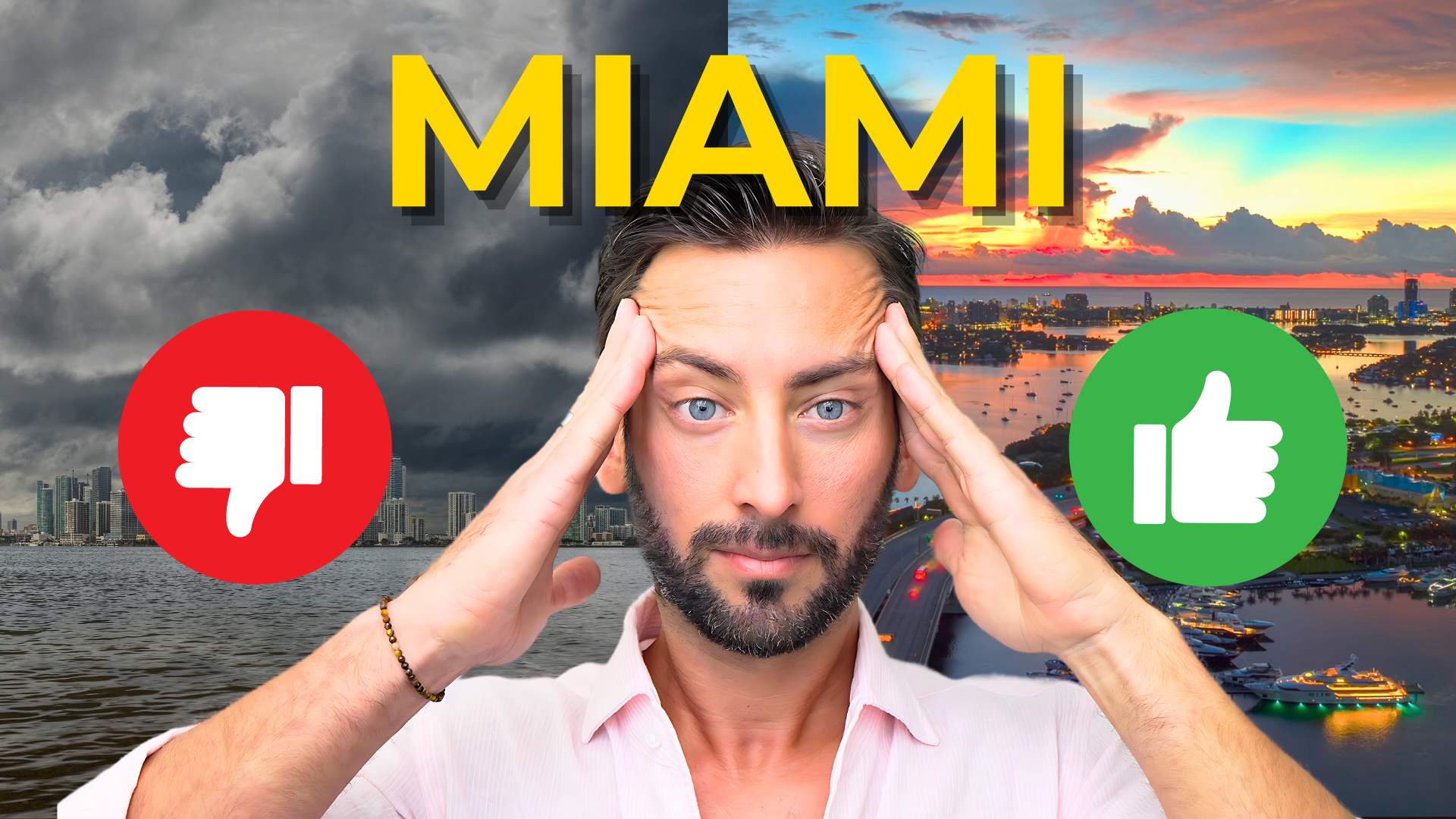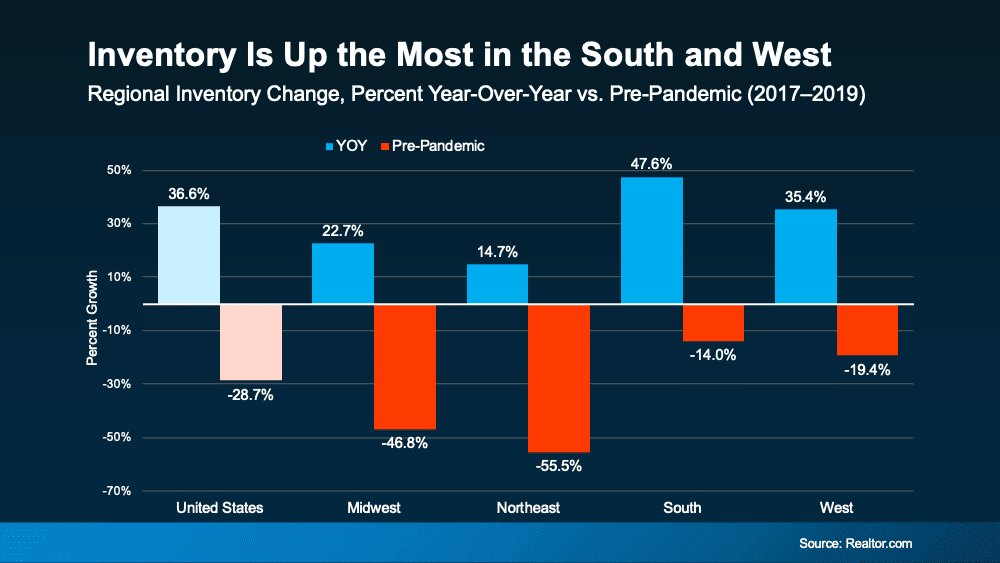Miami is often touted as a tropical paradise, but before you pack your bags and head south, there are a few things you should know. Here's a detailed look at the aspects of Miami living that might give you pause.
To watch the full video on YouTube, click the image below:
1. The Weather: A Double-Edged Sword
Miami is famous for its tropical climate, boasting an average of 248 sunny days per year. However, unlike most places, Miami essentially has two seasons: hot and hotter. Just kidding—we do have summer and winter, but they differ from what you might be used to.
Summer in Miami, lasting from June to September, is typically hot and humid. Temperatures range from the mid-80s to the low 90s, but with humidity levels often exceeding 70% to 80%, it can feel much hotter, with heat indexes frequently surpassing 100 degrees.
Winter, from December to February, is mild and dry. Temperatures range from the mid-60s to mid-70s, with occasional dips into the 50s at night. For locals, these "cold" days are when you’ll see the fur coats and boots come out!
Miami also has distinct wet and dry seasons. The wet season, from May to October, is marked by frequent thunderstorms, especially in June and September. If you live in a high-rise in downtown Miami, you might see a clear view of the Atlantic Ocean one minute and a looming thunderstorm the next. The dry season, from November to April, simply means less rain.
And let's not forget about hurricane season, which runs from June to November, with the peak occurring from August to October. The combination of high temperatures, humidity, and warm sea temperatures make this a critical time to stay alert.
2. Beaches and Lifestyle: Miami’s Signature Appeal
Of course, Miami wouldn't be Miami without its stunning beaches and vibrant lifestyle. South Beach, located in the heart of the Art Deco District, offers pristine white sand, crystal-clear turquoise waters, and an energetic atmosphere. It's more than just a beach—it's a cultural experience, complete with colorful lifeguard towers, trendy restaurants, and a lively nightlife scene.
Beyond South Beach, Miami Beach stretches for miles, including destinations like Mid Beach and North Beach. A short drive over the scenic Rickenbacker Bridge will take you to Crandon Park and Bill Baggs Cape Florida State Park, both perfect for outdoor activities.
Miami's waterfront isn't just about beaches. Biscayne Bay is a playground for boating, kayaking, paddleboarding, and more. The Miami Riverwalk offers a leisurely stroll along the river, with opportunities for yacht spotting and dining at places like Zuma or Casa Neos, which offer picturesque views and delicious cuisine.
3. The Sunshine Tax: Miami’s Cost of Living
While the lifestyle is enviable, the cost of living in Miami isn't cheap. The average median home price is around $662,490. Dining out at a fast-casual restaurant will set you back about $18 per plate. As of this writing, regular gasoline costs $3.31 per gallon—cheaper than California but slightly more than New York City.
Additional expenses like property taxes, auto insurance, home insurance, flood insurance, and utilities tend to be higher in Miami compared to other parts of the country. While there are affordable neighborhoods, places like Coconut Grove can be extremely pricey, with median single-family home prices exceeding $2 million.
4. Older Homes: A Mixed Bag
Another factor to consider is that many homes in Miami are on the older side, built between the 1920s and 1960s. Neighborhoods like Coconut Grove and Coral Gables are known for their historic homes featuring Mediterranean Revival, Art Deco, and Mid-Century Modern designs.
However, there are exceptions. Doral, Miami's newest city incorporated in 2003, offers newer construction, with many homes built in the 1980s and 1990s. It's also one of the few areas in Miami where new construction is still abundant.
5. Laid-Back Culture: A Perfect Balance
Miami is renowned for its laid-back culture, but don't be fooled—this city knows how to turn up the energy when needed. Whether it's the nightlife in South Beach, art in Wynwood, or major events like the US Open, Art Basel, or the Miami F1, Miami can shift from chill to thrill in no time.
What makes Miami special is this perfect balance. You can start your day with sunrise yoga on the beach, enjoy high-energy activities in the afternoon, and then wind down with a leisurely walk along the shore, followed by dinner at a waterfront restaurant.
6. The Food Scene: A Culinary Paradise
One of Miami's most irresistible attractions is its food scene. In neighborhoods like Brickell, South Beach, and the Design District, you'll find some of the best restaurants in the country. Whether it's weekend brunches with a view of the bay, food festivals, or even the most casual food trucks, Miami offers a culinary experience like no other.
7. The Need for a Car: A City Built for Driving
One of the downsides of living in Miami is the necessity of having a car. While the city offers public transportation options like the MetroMover, Metrorail, and Metrobus, Miami is a sprawling city where having a car is almost essential.
The MetroMover is a free, automated train system that operates in downtown and Brickell. The Metrorail, an above-ground train system, connects various parts of the city but isn't much faster than driving. The Metrobus covers over 95 routes, but the sheer size of Miami makes a car indispensable for getting around efficiently.
8. Year-Round Outdoor Activities: Enjoying Miami’s Natural Beauty
If you love being outdoors, Miami is the place for you. The city offers a range of year-round activities, from kayaking, paddleboarding, and jet skiing to cycling along the Rickenbacker Causeway or strolling the Miami Beach Boardwalk.
Golf and tennis enthusiasts will enjoy courses like Crandon Park and Key Biscayne. And if you’re into the latest trends, paddle and pickleball are picking up steam. Festivals and markets are also plentiful, making it easy to understand why locals say, "We live where you vacation."
9. Taxes: The Hidden Costs
Another con to consider is the tax burden in Miami. While Florida is known for its lack of a state income tax, property taxes can be high. Fortunately, several measures can help homeowners manage this burden.
The Homestead Exemption allows property owners to reduce the taxable value of their primary residence by up to $50,000. The Save Our Homes Cap limits the annual increase in assessed value to 3% or the Consumer Price Index (CPI), whichever is lower. This is particularly beneficial in Miami's booming real estate market.
If you move within Florida, you can transfer your tax savings to your new home thanks to the portability of the Save Our Homes Cap. There are also property tax exemptions for senior citizens, especially those with low incomes. Additionally, Amendment 1, passed in 2008, placed a 10% cap on the assessed value of non-homestead properties, such as second homes and commercial properties.
10. Air Traffic Patterns: The Hidden Noise
One con that often goes unmentioned is the air traffic patterns associated with Miami International Airport. Located in the middle of the city, the arrival and departure of flights can impact your lifestyle, depending on where you live. If peace and quiet are important to you, this is something to consider.
11. Unique Neighborhood Charm: Something for Everyone
Despite Miami-Dade County’s large population, each neighborhood in Miami has its own unique charm and character. Coral Gables is known for its tree-lined streets and walkable access to local shops, cafes, and restaurants, especially around Miracle Mile.
In Coconut Grove, you’ll find parks, marinas, and shopping all within walking distance. Brickell, often referred to as the Manhattan of the South, is an urban hub where residents can walk to work, enjoy rooftop bars, and shop at Brickell City Centre. Edgewater offers a blend of urban living with waterfront views.
For a more suburban feel, Miami Shores provides a walkable downtown area with parks, cafes, and shops. North Miami, including the exclusive Keystone Islands, offers a unique mix of suburban living with walkable areas and waterfront homes.
And once you move into that home, it doesn't matter where you're coming from—whether it’s California, New York, Illinois, or even internationally—one of the beautiful things about Miami is that everyone wants to come and visit. Your friends and family won't need any convincing to join you in this vibrant city.
If you’re considering moving to Miami or selling your home, I’m here to help. My name is Anthony Spitaleri, and I’m a real estate broker with Home Miami Realtors. Feel free to reach out here. My team and I would love to assist you in finding your perfect Miami home. Thanks for reading, and I look forward to seeing you in the Magic City!




